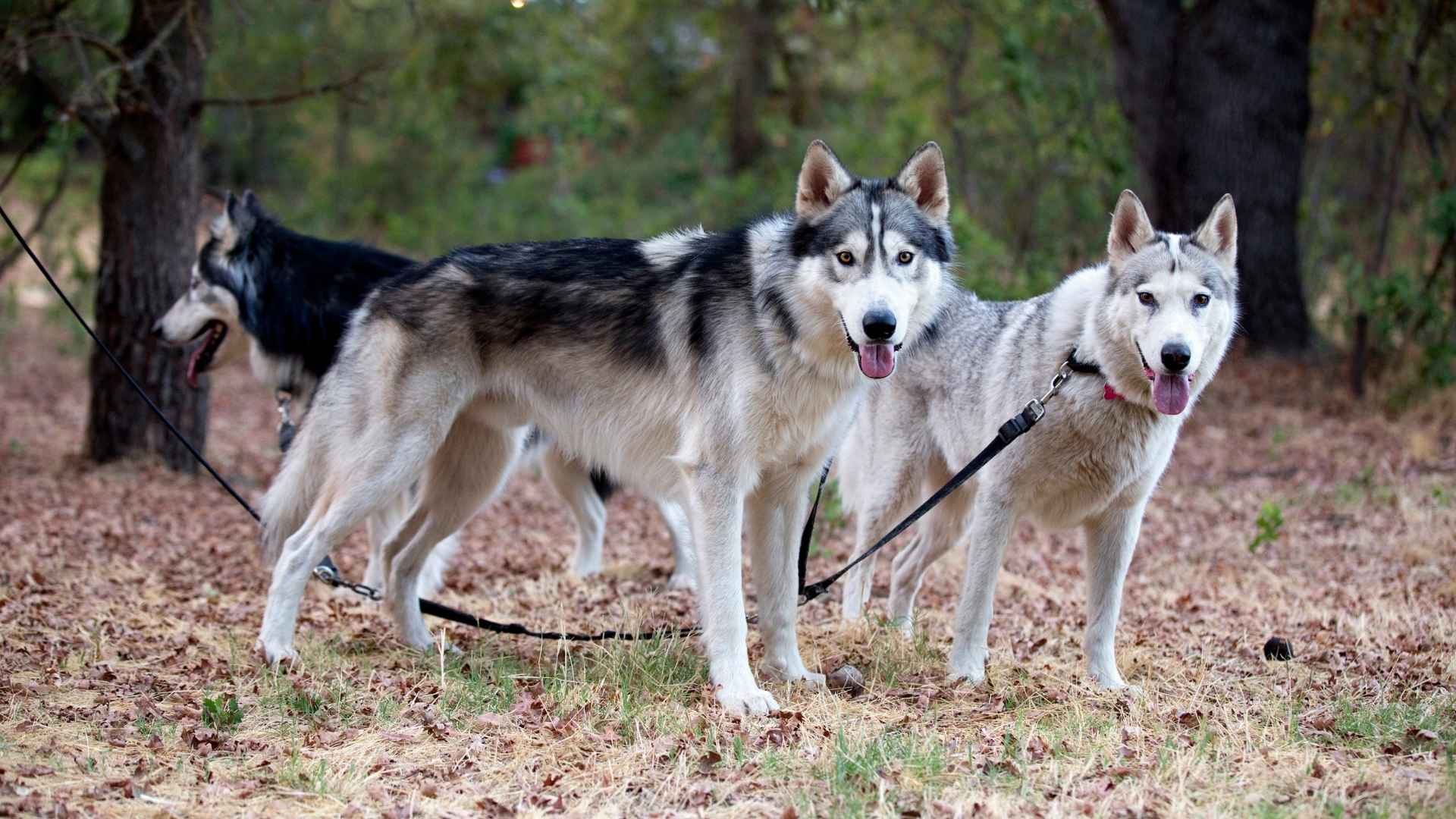Dreaming of a cozy life deep in the woods, with fresh air, towering trees, and a furry sidekick by your side? Sounds like a dream come true! But before you pack your bags and leash up, it’s super important to pick a dog breed that’s built for the woodland life.
Living in the woods isn’t quite like city or suburban life—there’s wide-open space to roam, curious wildlife to keep an eye on, and all kinds of weather to brave. Not every pup is cut out for that kind of adventure!
That’s why we’re here to help you find the top choices of dog breeds for living in the woods—dogs who love nature as much as you do, have the right energy levels, and are ready to be your loyal, outdoor-loving companions. Let’s dive into the top breeds that are happiest when surrounded by trees and fresh forest air!
Best Dog Breeds for Living in the Woods
1. Labrador Retriever

The Labrador Retriever, a sporty pup that first made waves in Newfoundland before hitting England’s shores around 1800, is a classic all-rounder. With a sturdy build, shorter legs, and a tail shaped like an otter’s, this dog rocks a thick, water-friendly coat in black, chocolate, or sunny yellow.
Labs are bursting with energy and need plenty of daily playtime—think running, swimming, dock diving, or even some doggy surfing.
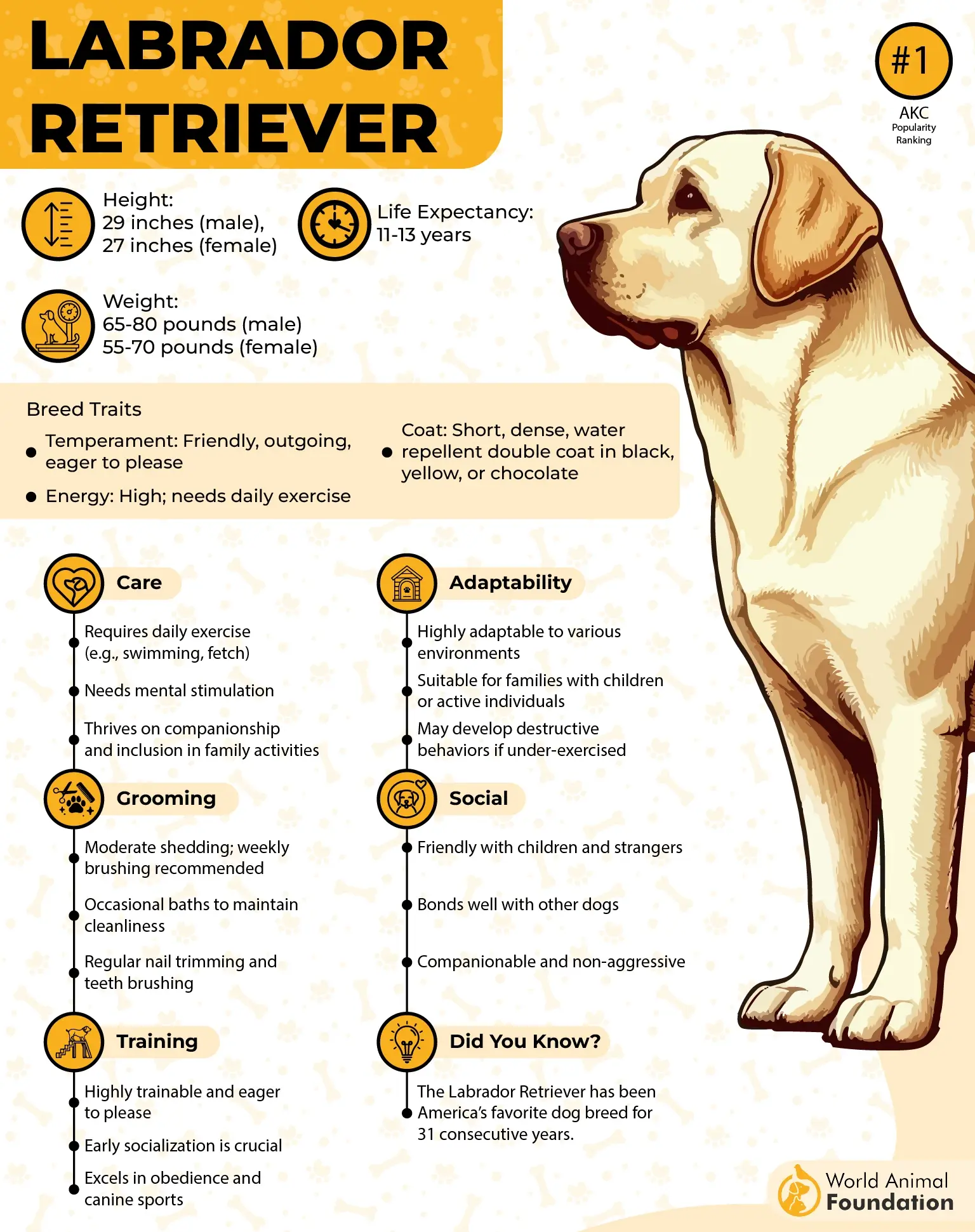
Labradors come with a spirited streak since they are hunting dogs by nature. These dogs were bred to dive into icy waters and keep fetching long after others would call it quits. They’re smart, responsive to commands, and great at finding games without wandering off too far.

This mix of energy and obedience makes them a loyal, brave companion, though their strong-willed side can keep you on your toes when they’re young. Luckily, Labs are social butterflies who usually get along swimmingly with other dogs and pets.
Beyond playtime, Labs shine in all sorts of jobs due to their gentle temperament and friendly disposition. They excel as guide dogs for the visually impaired, therapy pals, explosive detectors, and even search-and-rescue heroes. Their keen senses and eagerness to work make them true all-stars. For those living in rural areas or the countryside, Labs are absolute gems, states Britannica.
Their love for outdoor adventures matches perfectly with a rural lifestyle, where they can run freely and join in on hikes, swims, and all kinds of fun. After a day of exploring, these friendly furballs are just as happy curling up for some well-deserved couch cuddles. With their boundless zest and warm hearts, Labs bring joy and energy.
2. Australian Shepherd
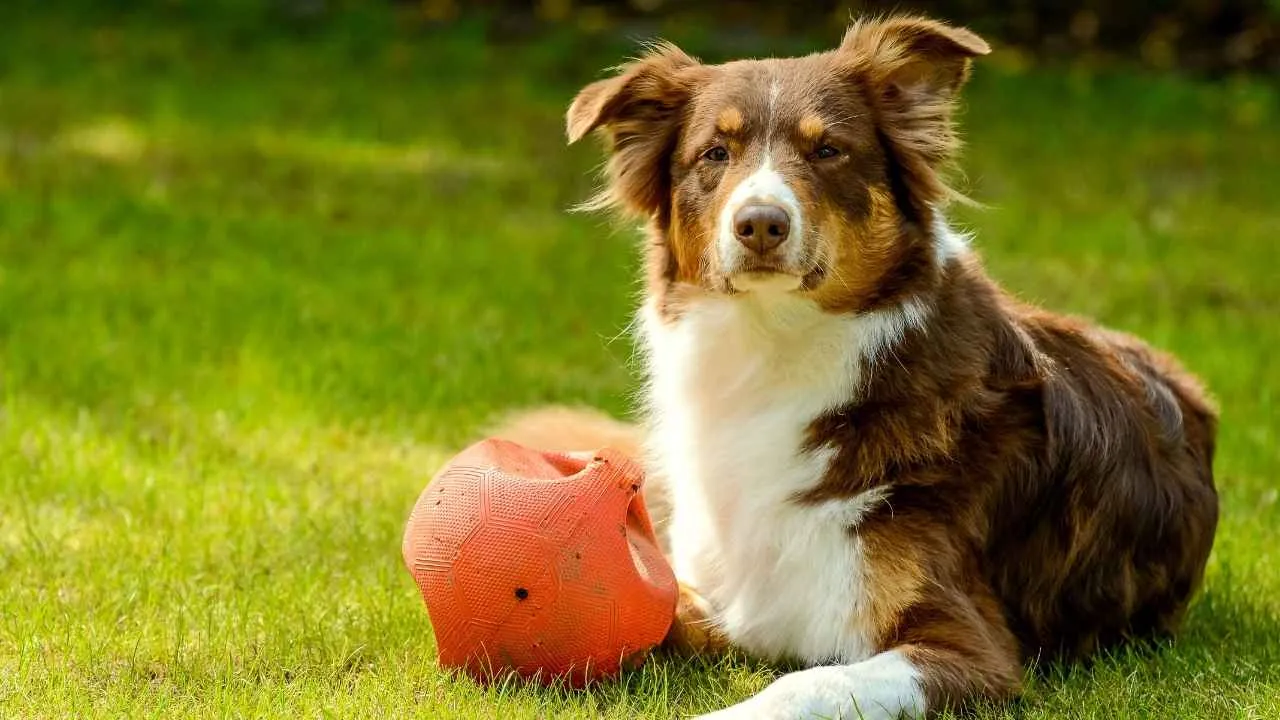
Don’t let the name fool you—the Australian Shepherd, or “Aussie” for short, actually hails from the American West, not Australia. This medium-sized herding dog is a high-energy bundle of smarts and athleticism, bred to keep busy on ranches and farms.
With roots tracing back to British herding dogs and possibly even some Basque mountain breeds, Aussies are built for action and adventure.
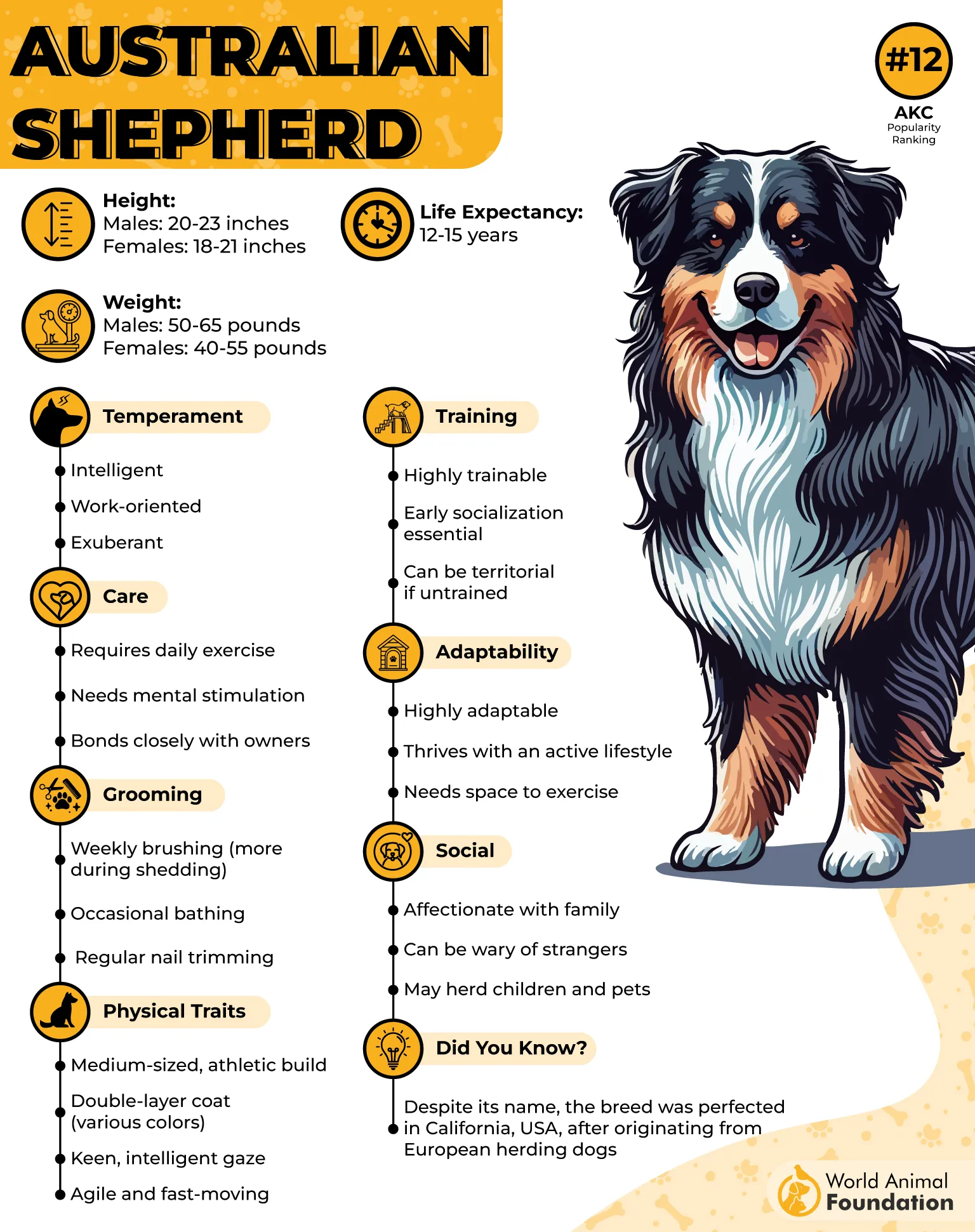
Australian Shepherds need serious mental and physical exercise—think daily jogs, games of tug, swimming, or some serious agility training. They thrive on having a job, whether it’s herding livestock, tracking scents, or just being your ultimate hiking and running buddy, states WebMD.

These pups are playful, quick learners who love to show off their skills and bond tightly with their humans. While Aussies can be a bit wary of strangers and sometimes bossy with other dogs, they’re loyal watchdogs with big hearts.
Perfect for active families who have the time and energy to keep up, this smart and spirited breed is always ready to work, play, and stick by your side through any outdoor adventure.
3. Alaskan Malamute
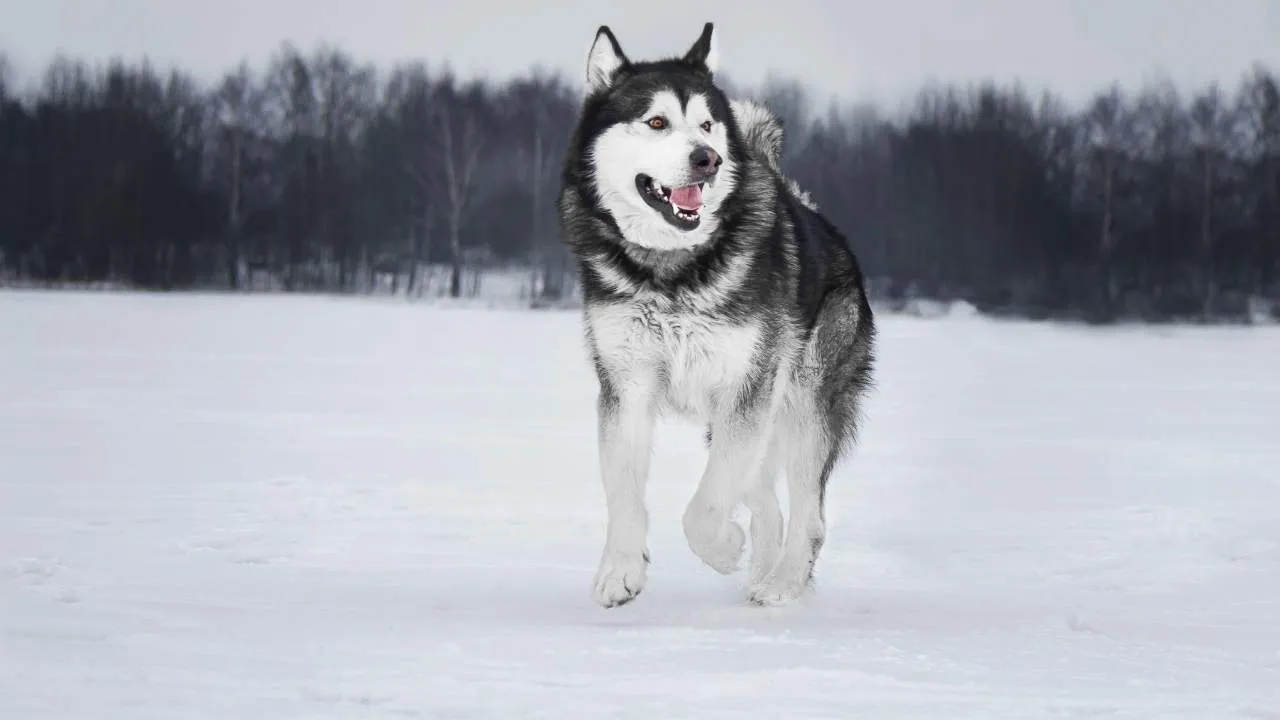
Alaskan Malamutes are big, fluffy powerhouses built for adventure and hard work. Originally bred to haul heavy loads and pull sleds across the snowy terrain, these strong dogs love staying active and being part of a busy, outdoorsy family. With their friendly, affectionate nature and striking looks, Mals make loyal companions who are always up for the next challenge.
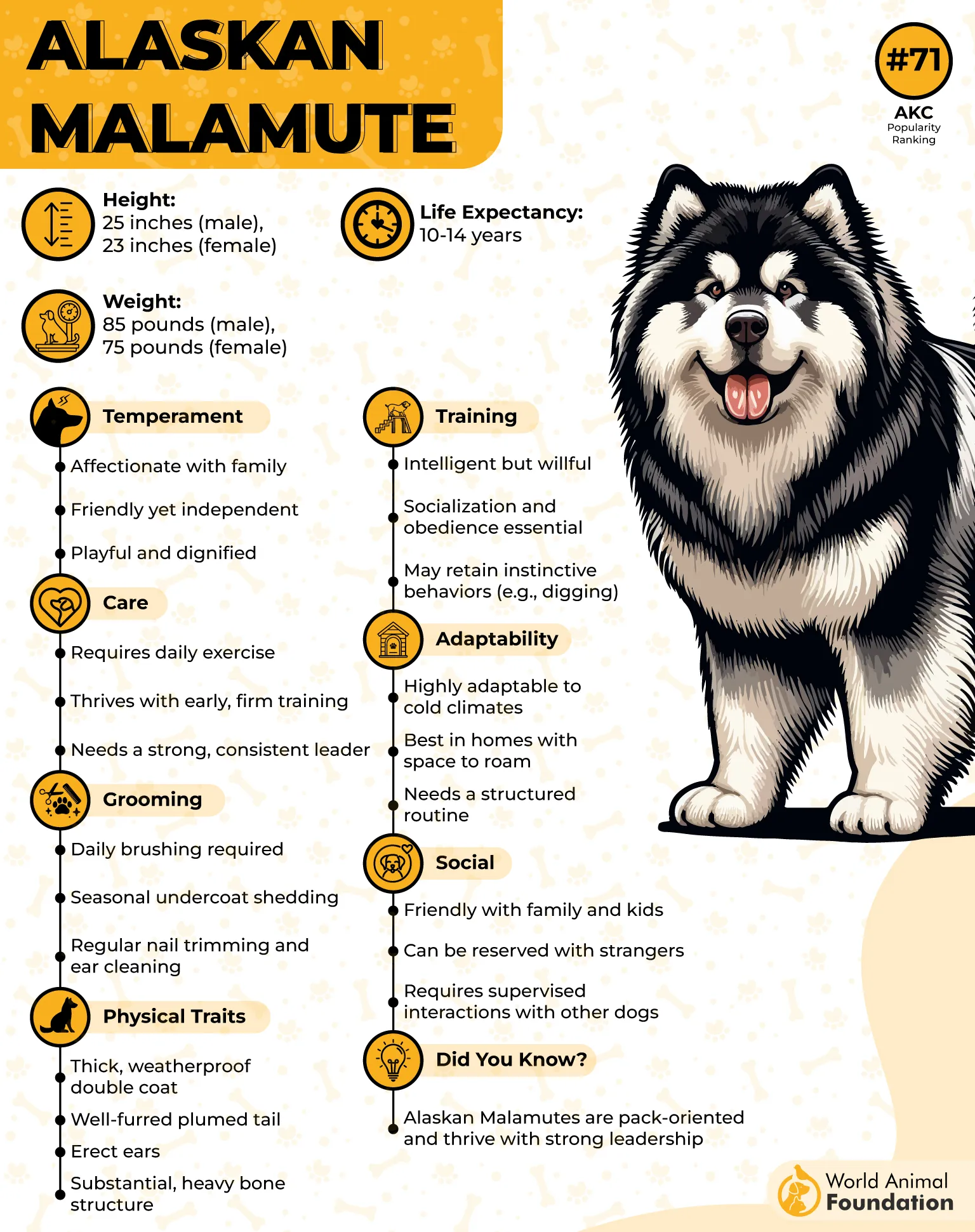
These pups need serious daily exercise—think at least two hours of running, hiking, or pulling a backpack. A quick stroll around the block just won’t cut it. Without enough activity, they get bored fast, and let’s just say your furniture won’t be safe!
Mals are clever and need mental challenges, too. Simple toys won’t do; they thrive on dog sports like weight pulling, bikejoring, and tracking to keep their minds sharp.
Malamutes have a unique way of “talking” with howls and “woo woo” sounds, trying to chat with their humans. They’re also notorious diggers, often sneaking off to create tunnels or pits in the garden. While loving and loyal, they can be a bit stubborn and independent, so patience is key when training.
Because of their strong prey drive, they might chase small animals. So, it is safest to let them roam only in enclosed areas or on long leads. If you’re ready for a big-hearted, adventurous buddy who’s equal parts muscle and mischief, the Alaskan Malamute is your perfect forest explorer.
4. Bernese Mountain Dog
Bernese Mountain Dogs, or Berners, have been around for over 2,000 years, brought to Switzerland by the Romans. These gentle giants were hardworking farm helpers, pulling carts, herding cattle, and keeping an eye out for predators. They’re instantly recognizable by their silky black coats with rust and white markings, big, broad chests, and those adorable hanging V-shaped ears.
Bernese Mountain Dogs are among the more active giant breeds, but compared to your typical high-energy dog, they’re pretty laid-back, even-tempered, and easygoing. They’re affectionate and playful, with a sweet nature that usually wins over strangers, other pets, and fellow dogs without any fuss. Their gentle vibe makes them wonderful family companions.
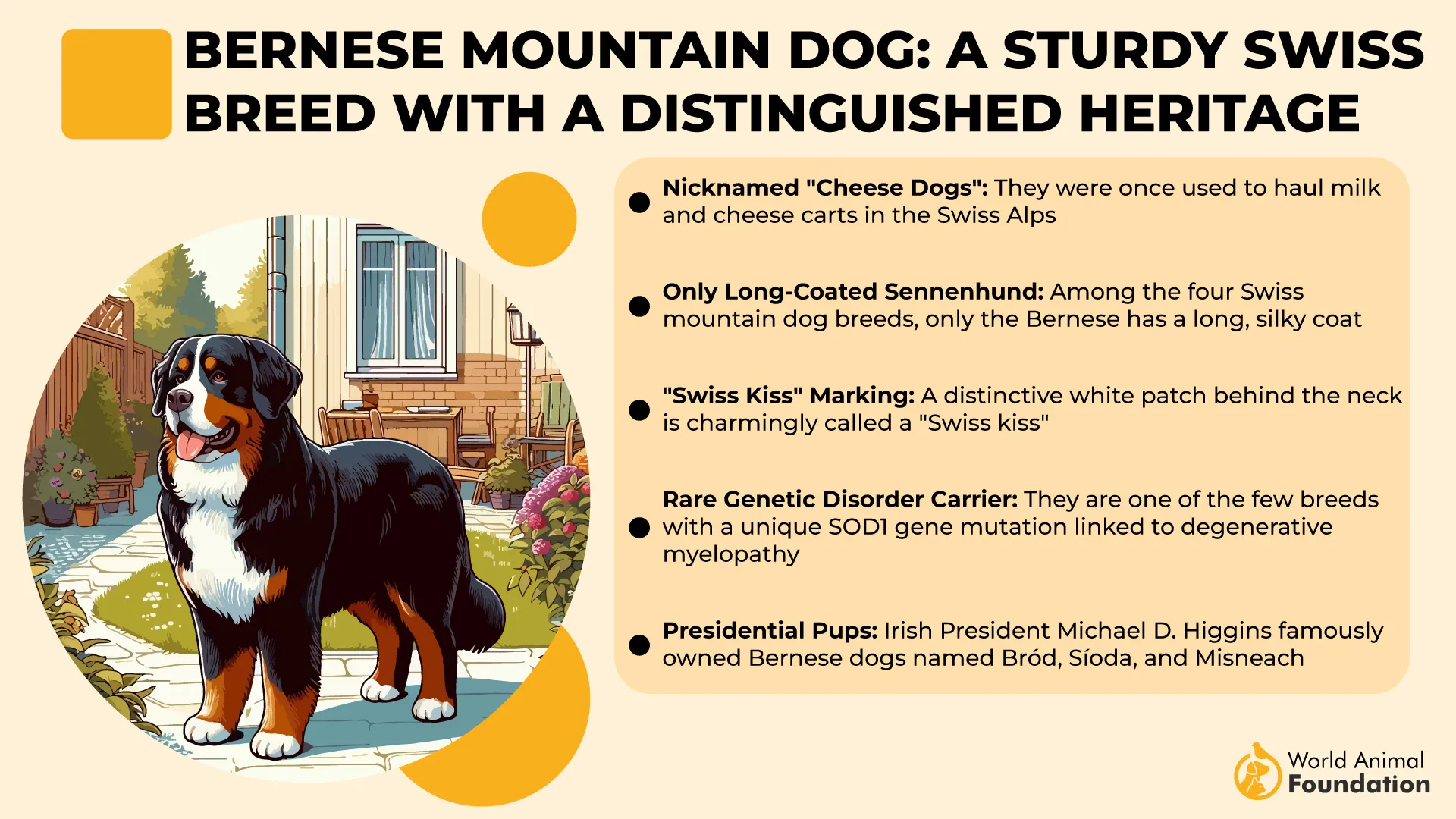
While Berners do have a deep, booming bark that can sound intimidating, they’re more likely to be friendly watchdogs than fierce protectors. They’ll alert you to visitors or unusual noises but aren’t known for aggressive guarding.
Just keep in mind that because of their impressive size and strength, they might be a bit overwhelming for small children or seniors to handle comfortably.
These big fluff balls aren’t the type to live outside all day — they love being part of the family and enjoy cozy indoor time. But they also need regular exercise and are happiest joining you on long walks or hikes to stretch their legs and burn off energy, states Purina.
They’re smart and eager to please, and easy to train. Thanks to their farm dog heritage, Berners thrive in country settings, where they can help herd or guard livestock or simply relax as loyal outdoor buddies, soaking up the fresh air.
5. Rhodesian Ridgeback
Rhodesian Ridgebacks are true all-rounders, famously sporting a distinctive ridge of hair running along their backs—their signature look! These sleek, athletic dogs originated in Africa and earned their stripes by tracking and baying lions without harm. Today, they’re beloved family companions known for their strong independence and impressive stamina.
These dogs have loads of energy and need daily exercise to stay happy, whether it’s jogging, hiking, or a good game of tug. They also love swimming and excel in dog sports like agility and nose work, which keep both their bodies and minds busy.
With a strong prey drive, they’re natural chasers, so a secure fenced yard is essential to keep them safe and focused on their family rather than wildlife or neighborhood critters.
Ridgebacks are loyal protectors who take guarding seriously. They’re smart and strong-willed, so consistent, patient training is a must to keep their bossy side in check and turn them into respectful, confident companions.
They’re not big barkers but will alert you when something’s wrong. Affectionate and deeply attached to their families, they especially adore kids and thrive when close to their people.
6. Border Collie
Border Collies are true brainiacs of the dog world, originally bred along the English-Scottish border for one demanding job — herding sheep with incredible skill and precision. These pups usually sport striking black-and-white coats, though you might spot some red-and-white or tricolor beauties too.
Border Collies are highly intelligent and natural athletes, often stealing the spotlight in agility and other canine competitions thanks to their quick reflexes and eagerness to learn, states PetMD.
What really sets Border Collies apart is their insatiable need for both mental and physical challenges. These dogs thrive when given a task or puzzle to solve. Without enough stimulation, they can become anxious or destructive, so they’re best suited for owners who are ready and willing to keep them busy.
Whether it’s hiking up a steep mountain trail or an intense game of fetch in the backyard, Border Collies leap at any opportunity to get moving and put their brains to work.
No matter the weather — rain, shine, or snow — these agile pups are up for an adventure. They’re tough and adaptable, loving activities like rally obedience, flyball, and trick training, where their smarts and enthusiasm really shine. If you’re looking for a loyal, energetic companion who’s as sharp as a tack and loves to stay active, a Border Collie might just be your perfect partner in crime.
7. Great Pyrenees
Great Pyrenees are the majestic guardians, originally bred high in the rugged Pyrenees Mountains straddling the border between France and Spain, as livestock guardians, protecting flocks from predators like wolves and bears. At the same time, the smaller Pyrenean Shepherds handled herding.
These gentle giants wear snowy-white thick coats that sometimes sport beautiful hints of gray, tan, or badger, giving them an almost regal appearance. Their calm and intelligent nature makes them the perfect blend of serene and alert — they’re laid-back most of the time but always ready to jump into action if trouble shows up.
Born for the great outdoors, the Great Pyrenees is happiest when they have plenty of space to roam and patrol. They thrive in cold weather or mountain environments, where their dense fur keeps them warm through harsh weather.
Still, no matter how tough they are, they need a cozy shelter to protect them from biting wind, heavy rain, and freezing temperatures. Access to fresh food and water is a must, too, to keep these large dogs healthy and strong.
While they’re incredibly loyal and protective and love spending time with their human families, these dogs can become bored and even destructive if cooped up inside for too long. The best lifestyle for a Great Pyrenees is a balance: lots of outdoor activities to satisfy their guarding instincts and plenty of warm, comfy indoor spots, especially on chilly winter nights.
Fun Fact:
AKC states the Great Pyrenees was originally bred to guard flocks at night while shepherds slept, making them naturally nocturnal. As a result, they often bark after dark—a trait that doubles as an effective burglar deterrent for modern homes.
Conclusion
Choosing the best dog breeds for living in the woods means finding loyal, hardworking companions built for outdoor life. Whether it’s an Australian Cattle Dog or a German Shorthaired Pointer with a short coat ready for trail running, or a Siberian Husky built for winter adventures, these working dogs thrive with plenty of exercise and mental stimulation.
Jack Russell Terriers excel at hunting small vermin, while Golden Retrievers and German Shepherds make excellent guard dogs and friendly family pets alike. Living in the woods often means extended periods outside, so breeds with the right coat and size, like large German Shepherds or hardy Huskies, are ideal.
Puppies raised in this lifestyle should be socialized early to avoid separation anxiety, especially if you have two dogs or other pets like cats. Remember, many other breeds can adapt well to woodland living, but always consult your vet to ensure your furry friend stays healthy and happy. With the right preparation, your dog can be your best friend through every season and adventure.


